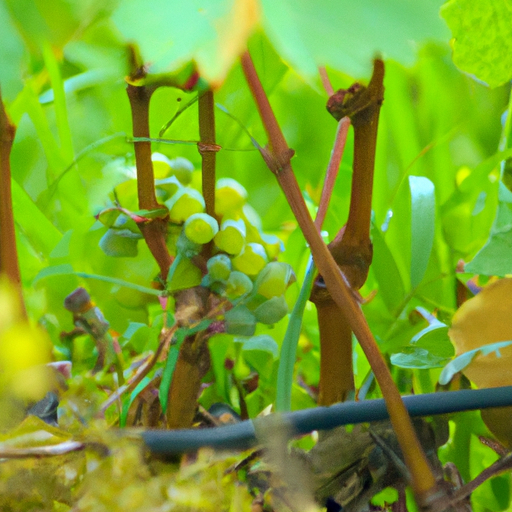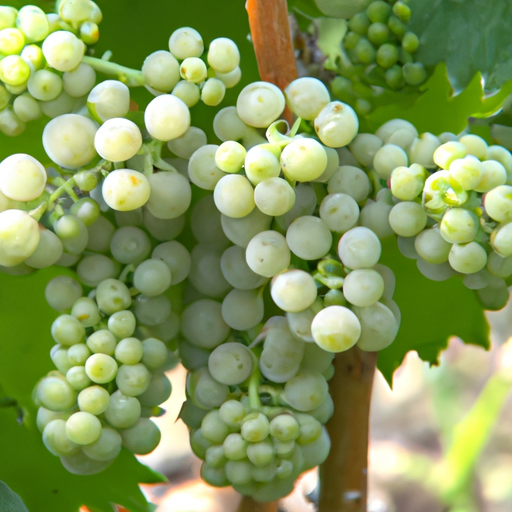
The Role of Fungus in Improving Water Efficiency in Vineyards
Vineyards are no strangers to the challenges posed by drought. With water scarcity becoming an increasingly pressing issue in many wine-growing regions, winemakers are constantly seeking innovative solutions to improve water efficiency in their vineyards. One such solution lies in harnessing the power of fungus.
Fungus, often associated with disease and decay, may seem like an unlikely ally in the fight against drought. However, certain types of fungi have been found to play a crucial role in enhancing water efficiency in vineyards. These fungi form symbiotic relationships with grapevines, creating a mutually beneficial partnership that helps the plants thrive even in arid conditions.
One of the most well-known examples of such a symbiotic relationship is the partnership between grapevines and mycorrhizal fungi. Mycorrhizal fungi form a network of fine threads called hyphae that extend into the soil, effectively increasing the surface area through which the plants can absorb water and nutrients. In return, the fungi receive sugars and other organic compounds from the grapevines.
This partnership not only improves water efficiency but also enhances the overall health and resilience of the grapevines. The hyphae of mycorrhizal fungi can access water sources that are otherwise inaccessible to the plants, allowing them to withstand periods of drought without suffering significant stress. Additionally, the fungi help to protect the grapevines from soil-borne pathogens, further bolstering their ability to withstand challenging environmental conditions.
Another type of fungus that has shown promise in improving water efficiency is endophytic fungi. These fungi live within the tissues of grapevines without causing any harm. Instead, they provide a range of benefits, including increased resistance to drought. Endophytic fungi produce compounds that help the plants retain water more effectively, reducing the amount of water lost through transpiration.
In addition to their direct effects on water efficiency, fungi can also indirectly contribute to the conservation of water in vineyards. By improving the overall health and vigor of grapevines, fungi help to reduce the need for excessive irrigation. Healthy plants are better equipped to withstand periods of water scarcity, requiring less supplemental watering to survive.
Implementing fungal-based strategies for improving water efficiency in vineyards does require careful management. It is crucial to select the right types of fungi and ensure their successful establishment in the vineyard ecosystem. This may involve inoculating the soil with fungal spores or introducing fungal cultures to the root systems of grapevines.
Furthermore, maintaining a balanced and diverse soil microbiome is essential for the long-term success of fungal-based strategies. A healthy soil ecosystem supports the growth and activity of beneficial fungi, creating a self-sustaining system that continues to improve water efficiency over time.
In conclusion, harnessing the power of fungus can be a winemaker’s weapon against drought. By forming symbiotic relationships with grapevines, certain types of fungi enhance water efficiency, improve plant health, and increase the resilience of vineyards in the face of water scarcity. From mycorrhizal fungi to endophytic fungi, these microscopic allies offer a natural and sustainable solution to the challenges posed by drought. With careful management and a focus on maintaining a healthy soil ecosystem, winemakers can tap into the potential of fungi to create more water-efficient vineyards and ensure the future sustainability of their industry.
Exploring the Potential of Fungal Inoculants for Drought Resistance in Grapevines

Drought is a persistent and growing problem in many wine-producing regions around the world. As climate change continues to alter weather patterns, winemakers are faced with the challenge of producing high-quality grapes in increasingly arid conditions. However, recent research has shown that harnessing the power of fungi may hold the key to combating drought and ensuring the sustainability of the wine industry.
Fungi have long been recognized for their ability to form symbiotic relationships with plants, providing them with essential nutrients and aiding in their growth and development. In the case of grapevines, certain fungi have been found to enhance the plants’ ability to withstand drought stress. These fungi, known as fungal inoculants, can be applied to the soil or directly to the roots of grapevines, where they colonize the plant and establish a mutually beneficial relationship.
One of the most promising fungal inoculants for drought resistance in grapevines is mycorrhizal fungi. These fungi form a symbiotic association with the roots of plants, extending their reach into the soil and increasing the plants’ access to water and nutrients. In addition, mycorrhizal fungi produce compounds that help plants cope with drought stress, such as osmolytes that regulate water balance and antioxidants that protect against oxidative damage.
Research has shown that grapevines inoculated with mycorrhizal fungi exhibit increased resistance to drought. These plants have been found to have higher water-use efficiency, meaning they are able to extract more water from the soil and use it more efficiently for growth and development. In addition, mycorrhizal inoculation has been shown to improve the plants’ ability to regulate stomatal closure, reducing water loss through transpiration.
Another group of fungi that show promise for drought resistance in grapevines are endophytic fungi. These fungi live within the tissues of plants without causing any harm, and they have been found to confer a range of benefits to their host plants, including increased drought tolerance. Endophytic fungi produce compounds that help plants cope with drought stress, such as enzymes that scavenge reactive oxygen species and hormones that regulate plant growth and development.
Studies have shown that grapevines inoculated with endophytic fungi exhibit improved drought tolerance. These plants have been found to have higher survival rates and better growth performance under water-limited conditions. In addition, endophytic inoculation has been shown to enhance the plants’ antioxidant defense system, reducing oxidative damage caused by drought stress.
While the potential of fungal inoculants for drought resistance in grapevines is promising, there are still many challenges to overcome before they can be widely adopted by the wine industry. One of the main challenges is the development of effective and reliable inoculation methods. Currently, most inoculation techniques involve the application of fungal spores or mycelium to the soil or roots of grapevines, but more research is needed to optimize these methods and ensure consistent results.
In addition, there is a need for further research to understand the mechanisms by which fungal inoculants enhance drought resistance in grapevines. This knowledge will be crucial for the development of targeted and effective inoculation strategies. Furthermore, more studies are needed to evaluate the long-term effects of fungal inoculation on grapevine health and wine quality.
In conclusion, harnessing the power of fungi may hold the key to combating drought and ensuring the sustainability of the wine industry. Fungal inoculants, such as mycorrhizal and endophytic fungi, have been found to enhance the drought resistance of grapevines by improving water-use efficiency and regulating plant growth and development. However, further research is needed to optimize inoculation methods and understand the underlying mechanisms. With continued research and development, fungal inoculants have the potential to revolutionize grapevine cultivation and help winemakers adapt to the challenges of a changing climate.
Harnessing Fungal Diversity for Sustainable Water Management in Winemaking
Winemaking is an ancient art that has been practiced for thousands of years. Over time, winemakers have developed various techniques to enhance the quality and flavor of their wines. One of the challenges that winemakers face is the scarcity of water, especially in regions prone to drought. However, recent research has shown that harnessing the power of fungus can be a winemaker’s weapon against drought.
Fungi are a diverse group of organisms that play a crucial role in the ecosystem. They are known for their ability to break down organic matter and recycle nutrients. In winemaking, certain types of fungi, known as mycorrhizal fungi, have been found to have a symbiotic relationship with grapevines. These fungi form a mutually beneficial partnership with the roots of the grapevines, helping them absorb water and nutrients from the soil.
Mycorrhizal fungi have been shown to improve the water-use efficiency of grapevines, making them more resistant to drought. They do this by extending the root system of the grapevines, allowing them to access water from deeper in the soil. Additionally, these fungi produce compounds that help the grapevines tolerate water stress and reduce water loss through transpiration.
In recent years, researchers have been exploring ways to harness the diversity of fungi to improve water management in winemaking. By studying the different types of fungi present in vineyards, scientists have been able to identify specific strains that are particularly effective at enhancing water-use efficiency in grapevines. These strains can then be used as biofertilizers, applied to the soil to promote the growth of mycorrhizal fungi and improve water uptake by the grapevines.
The use of fungal biofertilizers has shown promising results in vineyards around the world. In a study conducted in California, researchers found that grapevines treated with fungal biofertilizers had higher water-use efficiency and produced higher-quality grapes compared to untreated vines. Similar results have been observed in vineyards in Australia, Spain, and South Africa.
In addition to improving water-use efficiency, harnessing fungal diversity can also help winemakers reduce their reliance on chemical fertilizers and pesticides. By promoting the growth of mycorrhizal fungi, winemakers can enhance the natural defense mechanisms of grapevines, making them more resistant to pests and diseases. This not only benefits the environment but also contributes to the production of healthier and more sustainable wines.
While the use of fungal biofertilizers in winemaking is still relatively new, it holds great potential for the future of the industry. As climate change continues to pose challenges to agriculture, finding sustainable solutions to water management is crucial. Harnessing the power of fungi not only helps winemakers adapt to drought conditions but also promotes the long-term health and resilience of vineyards.
In conclusion, harnessing fungal diversity for sustainable water management in winemaking is a promising approach to combat drought and improve the quality of wines. By promoting the growth of mycorrhizal fungi, winemakers can enhance water-use efficiency, reduce reliance on chemical inputs, and contribute to the production of more sustainable wines. As research in this field continues to advance, it is likely that fungal biofertilizers will become an integral part of winemaking practices, ensuring the industry’s resilience in the face of climate change.






